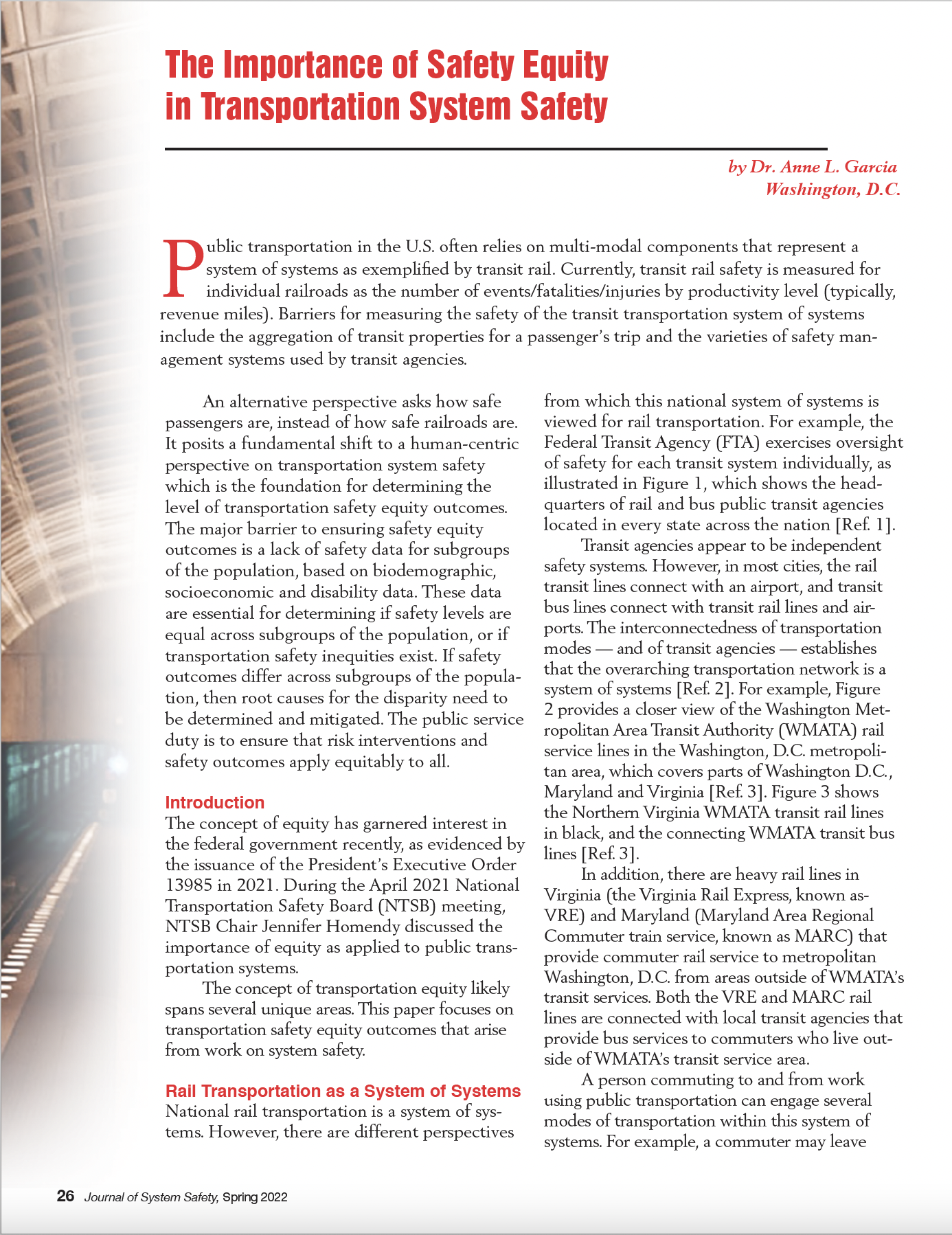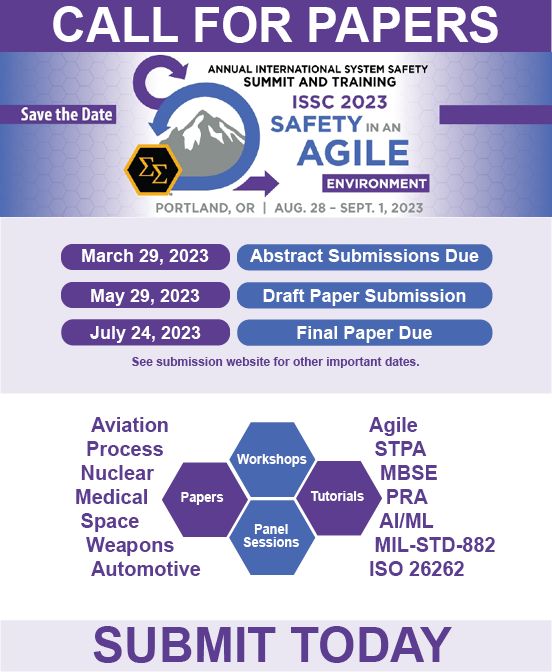The Importance of Safety Equity in Transportation System Safety
DOI:
https://doi.org/10.56094/jss.v57i2.191Keywords:
safety, equity, transportation, rail, safety metricsAbstract
Public transportation in the U.S. often relies on multi-modal components that represent a system of systems as exemplified by transit rail. Currently, transit rail safety is measured for individual railroads as the number of events/fatalities/injuries by productivity level (typically, revenue miles). Barriers for measuring the safety of the transit transportation system of systems include the aggregation of transit properties for a passenger’s trip and the varieties of safety management systems used by transit agencies.
An alternative perspective asks how safe passengers are, instead of how safe railroads are. It posits a fundamental shift to a human-centric perspective on transportation system safety which is the foundation for determining the level of transportation safety equity outcomes. The major barrier to ensuring safety equity outcomes is a lack of safety data for subgroups of the population, based on biodemographic, socioeconomic and disability data. These data are essential for determining if safety levels are equal across subgroups of the population, or if transportation safety inequities exist. If safety outcomes differ across subgroups of the popula-tion, then root causes for the disparity need to be determined and mitigated. The public service duty is to ensure that risk interventions and safety outcomes apply equitably to all.
References
U.S. DOT website. https://www.bts.gov/national-transit-map/national-transit-map-data-maps-and-apps. Accessed June 10, 2021.
Sage, A.P. and Cuppan, C.D. On the systems engineering and management of systems of systems and federations of systems. Information, Knowledge, Systems Management, 2(4), pp. 325-345, 2001.
WMATA website. https://www.wmata.com/schedules/maps/index.cfm?t=maps-rail-wrapper. Accessed June 10, 2021.
NTD website. https://www.transit.dot.gov/ntd/data-product/safety-security-time-series-data. Accessed June 10, 2021.
FRA website. https://www.govinfo.gov/content/pkg/FR-2020-03-04/html/2020-04424.htm. Accessed June 1, 2021.
National Transportation Safety Board. Amtrak Train 501 Derailment, DuPont, Washington, December 18, 2017. RAR-19/01, Washington, DC: National Transportation Safety Board, 2019.

Downloads
Published
How to Cite
Issue
Section
Categories
License

This work is licensed under a Creative Commons Attribution-NoDerivatives 4.0 International License.













